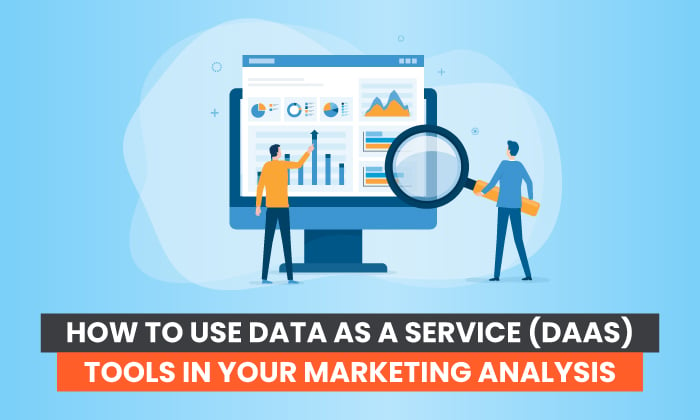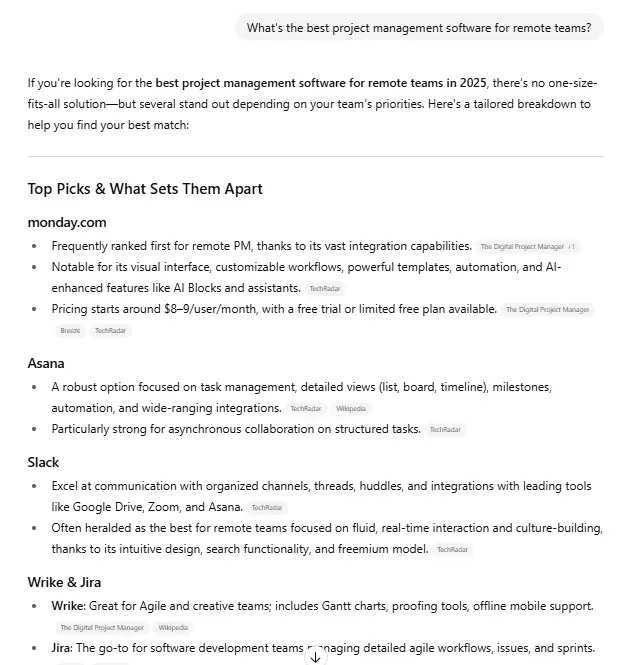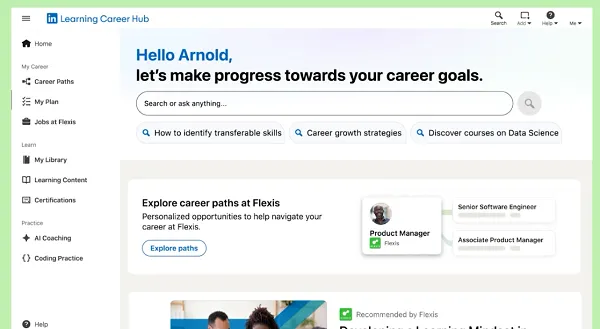10 Local SEO Strategies For Doctors And Dentists via @sejournal, @atuljindal01
Want to increase traffic from organic search? Learn the top local SEO strategies doctors and dentists need to grow their practice and bookings. The post 10 Local SEO Strategies For Doctors And Dentists appeared first on Search Engine Journal.

Google contributes a large percentage of traffic to many healthcare websites.
For doctor appointment bookings, 57% of patients start by using online search. And when patients are searching for a healthcare facility on Google, they genuinely mean business.
SimilarWeb finds that 85% of the traffic to ClevelandClinic.org, 83% of the traffic to HopkinsMedicine.org, and 87% of the traffic to MayoClinic.org comes from organic search.
But ranking on Google isn’t as simple as creating a website. The online world has grown way beyond that now.
Patients today search for doctors in their vicinity. That means you need to rank for your local audience to generate appreciable traffic in your clinic.
This is why local SEO has become necessary for all modern dental and medical practices that want to harness the internet’s potential and use it to grow their profits.
In this article, you will find 10 local SEO strategies that can help you get found by an audience that matters the most to your practice.
What Is Local SEO?
Local SEO is a type of SEO that helps your website appear higher in the search results for location-specific searches.
For example, a Nashville-based dental practice ranking for searches like “dentists in Nashville”.
Sometimes patients also search with key phrases like “dentist near me”. In that case, search engines use the searchers’ IP address or geolocation to connect them with relevant and nearby businesses.
Local healthcare SEO is a powerful tool that helps your medical practice gain substantial online visibility. If done correctly, it can help you get among the top-3 “pack” and help you win the search results even if your website does not appear on the first page.
Why Should Doctors And Dentists Consider Local SEO?
The first thing most patients turn to when they feel like visiting a doctor is, ironically, the internet.
If someone feels they need to see a dentist, they wouldn’t open the yellow pages and search the “D” section of the directory for the local dentist. Instead, they will turn to Google, or some other search engine, type in a key phrase like “dentist near me”, and book an appointment with whoever they like best.
That’s the approach most modern patients adopt. And practices that wish to maintain or increase their foot traffic need to adjust according to this approach so they could be among those that appear in response to location-specific and relevant searches.
Local SEO helps make that possible.
By optimizing your Google Business Profile to rank for relevant local searches, you can diversify your traffic acquisition channels and be where your customers are looking for you.
Once you rank for relevant local searches, your patients will know you as an option they have. And given other factors are met, they would be more likely to reach out and book an appointment.
Increasing foot traffic to your medical practice is just one of the ways local SEO contributes to your revenue.
It also helps you save on costly online ads, which reduces your marketing spend and eventually pushes your bottom line.
Local SEO also allows you to be where your peers are and compete with them on a level playing field. By ranking side by side with your competitors, you would be more likely to get a share of their prospective patients, which would be a million times better than giving up all your online patients to them by not being found in the local search results.
All the benefits that local SEO brings to your practice are increased appointments at your practice and more revenue. Let’s talk about some top strategies to help you get started with local SEO.
10 Practical Local SEO Strategies
After reading all the benefits of local SEO, you may be inclined to assume that it is expensive, time-consuming, and tedious, like regular SEO. However, that’s not the case.
It is true that certain local SEO factors require time and dedication to generate truly viable results but getting started is much simpler.
Here are top local SEO strategies that might help you find profit-driving online visibility:
1. List Your Practice On Google Business Profile
Google Business Profile, formerly known as Google My Business, is the source of local online visibility.
Google Business Profile helps small businesses find exposure and showcase their services or products to the interested audience. It offers all the tools you need to create an optimized, accurate, and descriptive listing that helps your patients learn what they need to know about your practice.
You need to have your practice listed on Google Business Profile to leverage local SEO benefits.
Sometimes Google automatically creates business listings on GBP. In that case, you would need to claim that listing, verify it, and check it for accuracy to ensure it does not drive your prospective patients away by disseminating incorrect information.
Also, adding the appointment booking link to your Google Business Profile can instantly increase your appointment bookings as one of LoudGrowth’s clients saw a 44% increase after adding the appointment booking link.
2. Double Down On Keyword Research
Keyword research is the heart of local SEO as it tells you what keywords to optimize with so that the search engines can link relevant queries to your listing and potentially drive patients to it.
Local keywords are distinct from regular keywords as they are marked by location-specific phrases like “Dentist near me” or “Pediatrician Nashville”.
To start with local keyword research, you first need to be intuitive and get into your patient’s mind.
What do they think when they are looking for a doctor? What are the words that they may use to search for a doctor?
Brainstorm a bunch of key phrases and create a list.
Once you have a list, find keyword research tools, and search the phrases from your list.
Shortlist the keywords relevant to your phrases and have the right balance between search volume and competition.
It is important to note that the search volume for local key phrases is usually low. Therefore, don’t hesitate to shortlist relatively smaller SV keywords.
You can also use keyword tools to see what keywords your competitors are ranking for. These words are proven to connect searching patients with practices like yours. Therefore, they can also help you find the right kind of visibility.
3. Capitalize On Google Posts
Google Posts is a free tool that offers local businesses a fantastic opportunity to engage and communicate with their audience.
Google Posts allow you to display up to ten of your most recent posts, which, according to some sources, stay live for up to 7 days. You can use this space for announcements, offers, and to promote your services, and explain your features to the audience.
You can display textual content and images both through Google Posts and end it with a CTA that links to your local landing pages.
Pro tip: make sure to use UTM parameters so you can track how much traffic is coming from your Google Posts.
Google Posts are designed to give quick information to prospective patients and convince them to take the desired action.
These can be utilized for many different post ideas such as offers and specials, products and services, events, business updates, etc.
A study conducted on 600 GBP profiles revealed service and discount-related posts bring the highest conversions in comparison to other ideas posts.
It is critical to have a proactive Google Posts strategy because this space is to communicate recent messages with prospective patients, you will need to work on not only sharing Google Posts but also updating them as the situation changes.
For example, your practice is offering free flu shots close to flu season, and you are promoting that via Google Posts. Once flu season passes, you will need to replace this post with something else since outdated content can tarnish your reputation.
To leverage its power and use them to drive results, you will need to write crisp, concise, and to-the-point copy that clearly communicates your value.
Also, keep in mind that though Google Posts have a 1500-character limit, only a few words are visible above the fold. So you have to concentrate as much information as you can in that space.
Google Posts come at zero cost and offer an excellent opportunity for you to engage with your audience and promote your service. However, you will need a verified Google Business Profile to be able to leverage this tool.
4. Health And Safety Attributes
Ever since the pandemic, people want to know the health and safety practices of places before they visit them.
Therefore, Google has included health and safety attributes in GBP listings. Apart from these essential attributes, there are other information nuggets that you can use to be more intuitive and give your prospective patients the information they need.
Apart from the health and safety attributes like temperature checks, mask requirements, staff safety precautions, etc., you can include other attributes as well, like whether patients need to book an appointment beforehand or can they get a walk-in appointment.
These attributes offer peace of mind and trust and give the prospects the information they need without them having to look for it.
You can add the attributes directly to your listing through your GBP.
5. NAP And Office Hours Consistency
According to a survey, 62% of respondents said that they use GBP listings to find business contact numbers and addresses.
This indicates that perhaps the number one reason people turn to Google for local businesses is to find out about their office hours, contact number, and address.
We can safely conclude what could happen if any of these is incorrect.
The prospect would be annoyed and likely to leave a negative review.
Imagine your office hour is listed as 9 am to 5 pm from Mon to Fri, as it is by default sometimes. But you practice from 1 pm to 4 pm on alternate weekdays.
Can you imagine the frustration of someone who saw the office hours on Google and dropped by your practice only to find out the timing was incorrect?
Again, imagine the frustration of someone who calls your practice using the contact number from Google but ends up trying for hours without a response.
These instances are likely to lead to a negative review on your GBP listing, which is something we have to avoid at all costs.
Therefore, you have to ensure that your office hours, name, address, and phone number (NAP) are all listed accurately on your GBP.
You also have to ensure that this information is consistent across all your customer touchpoints because even minor inconsistencies can lead to significant downfalls.
6. Local Landing Pages
When doing local SEO, many people are confused about whether they should link the call to action (CTA) to the website home page or have separate landing pages for each distinct keyword.
In this case, the most viable option is to link the CTA on your GBP listing to your local, keyword-relevant landing page.
You can use this landing page as the next step to your communication with the prospective patients and dive into more detailed information concerning the keyword.
For example, your keyword is “Pediatrician Boston”.
You can create a landing page that responds to the common pain points people in Boston have that would concern a pediatrician and communicate clearly how you can solve the problem.
Think about your user’s problems and try to address them on your landing page. Use clear and to-the-point headlines and arrange your textual information to keep the readers engaged.
Talk about benefits, not the features of your service, and include attractive, appealing images across your page to keep the audience engaged.
Also, make sure to optimize your page with the right keywords that are relevant to the service you are talking about on the page.
Try to include social proof, like testimonials and reviews, and trust signals like awards and certifications on the page to make your users trust your practice.
Place a CTA strategically on the page. Choose one action and stick to it if you want your readers to book an appointment, make your CTA “Book Your Appointment” or something like that. Don’t use a mix of CTAs and avoid the paradox of choice.
Embed a dynamic map at the bottom of the landing page, making it easier for the searchers to locate your facility.
Finally, don’t forget to optimize your landing pages for mobile users because half of all healthcare website visits come from mobile phones.
7. Local Link Building
Backlinks are your website’s URLs that are placed within the content of other websites. And the process of acquiring these links is called link building.
Google favors websites with a high volume of backlinks because it sees such websites as trustworthy and authoritative.
People seek out and get backlinks from relevant high authority websites for regular SEO. But for local SEO, you would need to get links from local entities so Google can trust your presence in that locality and rank your website for searches coming from there.
The process of acquiring links from your local websites is called local link building, and there are many strategies through which you can get a link from local websites.
You can create helpful content for doctors and dentists and get it posted on your community blog with a link back to your website.
If your practice makes enough revenue, you can sponsor a local school team or students from the local school or college and get a link from these institutions.
You can also join your local chamber of commerce and post in their news section to get a link from there.
Most cities have local newspapers. You can create PR content for these newspapers, offer advice, or write articles for them and link back to your website. These websites often enjoy high domain authority, so you can get valuable links from them.
You can also find local business directories and get your practices included in them to get another backlink.
These are just a few of the many local backlinking strategies. If you can get creative, the sky’s the limit.
8. Make Good Use Of GBP Calls And Messages
Businesses listed on GBP can get direct calls from google searchers.
Therefore, if you have included your phone number on GBP with the intent to receive calls and messages from your online audience, make sure you have someone to receive and respond to them.
Not responding to internet-driven calls and messages can lead to a bad customer experience, which can manifest as negative reviews and lousy promotion, which can be detrimental to your practice.
9. Local Reviews
Patients want to make sure the person they are going to consult is good at what they do. More importantly, they want the peace of mind that the facility is up to their standards and does not have a bad reputation. Due to these reasons, 98% of people read online reviews.
Therefore, the majority of healthcare consumers say online reviews influence their decision when selecting a healthcare service provider.
Therefore, you need to ensure your GBP listing features enough diverse reviews to win the prospective patients” trust.
Getting reviews, however, is not as straightforward as you may want it to be. Fully 74% of consumers write online reviews.
People would love to leave a bad review, but they rarely go out of their way to leave a good one.
Therefore, you will have to pursue positive reviews for the sake of your profit.
What you can do, in this case, is to follow up every patient’s appointment with a request to leave feedback on your GBP listing.
Make sure to go through all your reviews and remove any personally identifiable information that people may have shared accidentally in their reviews.
Also, while responding to positive reviews is important, address the negative reviews as well so the rest of the world knows you prioritize your patients” experience and work to make it a good one.
10. Multiple Professional Listings At One Address
Google allows you to share an address with various other businesses sharing the same location and have an independent GBP for your business, given that your business is distinct and has its own Tax Identification Code.
So, you can create an independent listing if you have a clinic located within an office building that houses many other businesses.
However, if you have a large hospital with several smaller clinics, it might become challenging to create an independent listing for each hospital.
Because you need to have distinct businesses, each of which files its taxes independently and has its own phone numbers to create a different listing for businesses operating from a similar location.
Final Words
Local SEO can unlock a new traffic channel for your practice. By helping you rank for local prospective patients, it can allow you to generate more bookings and consequently increase profit.
However, before you can enjoy its benefits, you will have to do the hard work of creating and maintaining a healthy Google Business Profile listing.
Once you have an optimized GBP listing, you will be more likely to harness the potential of SEO and garner more appointments for your practice.
More Resources:
Healthcare SEO Fundamentals To Grow Your Medical Practice New Google Search Features Help Connect People With Virtual Healthcare Options 7 Local Search Tips for Health Providers to Take Care of PatientsFeatured Image: Shutterstock

 FrankLin
FrankLin 































